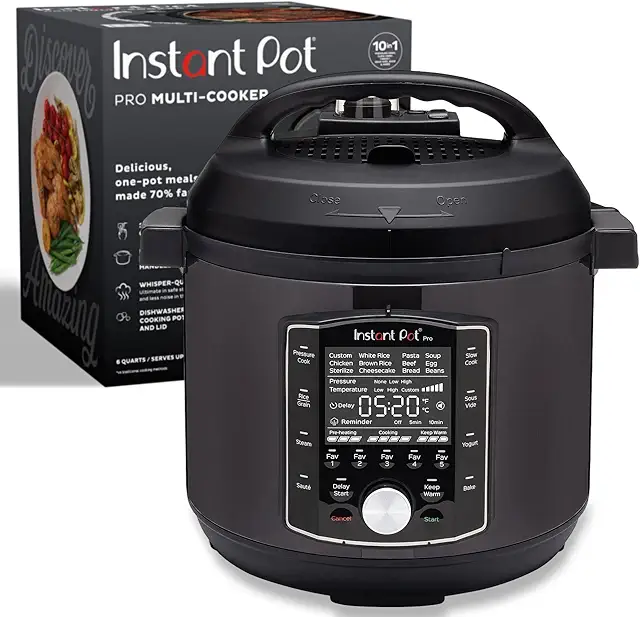
If you’re looking to bring a taste of Vietnam into your kitchen, then making Vietnamese Lemongrass Chicken is a must. This dish is bursting with flavor, thanks to the aromatic lemongrass and a mix of savory ingredients. It’s not only delicious, but it’s also pretty easy to whip up at home. Whether you’re grilling, baking, or pan-frying, this recipe will have your taste buds dancing in no time!
Key Takeaways
- Vietnamese Lemongrass Chicken is known for its fresh, citrusy flavor from lemongrass.
- Using boneless chicken thighs helps keep the dish juicy and flavorful.
- Marinating the chicken is key to enhancing the flavors of the dish.
- Serve it with rice, noodles, or in a banh mi for a complete meal.
- Experiment with grilling or baking for different textures and tastes.
Understanding Vietnamese Lemongrass Chicken
The Role of Lemongrass
Lemongrass is the defining ingredient in this dish. It’s not just there for show; it infuses the chicken with a bright, citrusy flavor that’s both refreshing and aromatic. Without it, you’re just making regular chicken, not Vietnamese lemongrass chicken. It’s that important. The flavor is so unique, it’s hard to describe, but it’s a must-try.
Flavor Profile and Ingredients
Vietnamese Lemongrass Chicken boasts a complex flavor profile. It’s savory, sweet, and a little bit tangy, all at the same time. The marinade typically includes fish sauce, sugar, garlic, and shallots, which create a balance of flavors that complement the lemongrass perfectly. The combination of these ingredients creates a unique taste that is both bold and delicate.
Cultural Significance
This dish is more than just food; it’s a staple in Vietnamese cuisine. You’ll find it served everywhere, from family dinners to street food stalls. It’s often enjoyed with rice or noodles and is a popular choice for gatherings and celebrations. It represents the heart of Vietnamese cooking, where simple ingredients are transformed into something truly special.
Vietnamese Lemongrass Chicken is a dish that brings people together. It’s a reminder of home, family, and the rich culinary traditions of Vietnam. It’s a dish that’s meant to be shared and enjoyed with loved ones.

Essential Ingredients for Vietnamese Lemongrass Chicken
Choosing the Right Chicken
When it comes to Vietnamese lemongrass chicken, the type of chicken you pick really matters. While chicken breasts work, boneless, skinless chicken thighs are the way to go. They stay juicy and soak up all that amazing marinade. Bone-in pieces can also be used, but you’ll need to adjust your cooking time to make sure they’re cooked through. I usually prefer to use boneless chicken because it cooks faster and it’s easier to eat. You can find great chicken recipes online.
Fresh vs. Dried Lemongrass
Lemongrass is the star of this dish, no question. Fresh lemongrass is always best – you get that bright, citrusy flavor that really makes the dish pop. But, if you can’t find fresh, you can use the frozen stuff. Just make sure to thaw it out completely before using it. I’ve tried using dried lemongrass before, and it just doesn’t have the same oomph. Here’s a quick comparison:
| Type | Flavor Intensity | Availability | Cost |
|---|---|---|---|
| Fresh | High | Seasonal | Moderate |
| Frozen | Medium | Year-Round | Moderate |
| Dried | Low | Year-Round | Low |
Key Marinade Components
The marinade is where the magic happens. It’s all about balancing those sweet, savory, and umami flavors. Here’s what you’ll need:
- Lemongrass: Finely minced, of course.
- Garlic and Shallots: These add a pungent base.
- Fish Sauce: Don’t skip this! It gives that authentic Vietnamese flavor.
- Sugar: Balances the saltiness of the fish sauce. You can use white or brown sugar.
- Oyster Sauce: Adds richness and depth.
A little paprika and Chinese five-spice powder can also add a nice color and extra layer of flavor to your lemongrass chicken. Don’t be afraid to experiment with the marinade to find what you like best!
Step-by-Step Guide to Cooking Vietnamese Lemongrass Chicken

Preparing the Marinade
Okay, so first things first, you gotta get that marinade going. This is where all the magic happens, trust me. Don’t skimp on the ingredients here. You’ll need your lemongrass (duh!), garlic, shallots, fish sauce, sugar, and whatever else your recipe calls for. I like to use a food processor to really get everything minced super fine, but you can chop it all by hand if you’re feeling ambitious. Just make sure it’s all nice and small so the flavors really infuse into the chicken. Mix everything together in a bowl until the sugar dissolves.
Cooking Techniques
Alright, now for the fun part: cooking! You’ve got options here, people. You can grill it, pan-sear it, bake it, or even air fry it. Grilling gives you that nice smoky flavor, but pan-searing is quick and easy. Baking is good if you want a more hands-off approach. Air frying? Well, that’s just trendy, isn’t it? Whatever you choose, make sure you don’t overcook the chicken. Nobody wants dry, rubbery chicken. I usually aim for an internal temperature of 165°F (74°C). Use a meat thermometer to be sure!
Here’s a quick guide:
- Grilling: Medium-high heat, about 5-7 minutes per side.
- Pan-Searing: Medium-high heat, about 4-6 minutes per side.
- Baking: 375°F (190°C), about 20-25 minutes.
- Air Frying: 375°F (190°C), about 12-15 minutes.
Finishing Touches
Almost there! Once your chicken is cooked, let it rest for a few minutes before slicing. This helps keep it juicy. Then, you can garnish it with some fresh herbs like cilantro or mint. A squeeze of lime juice is always a good idea too. And if you’re feeling fancy, you can sprinkle some toasted sesame seeds on top. Serve it with rice or noodles, and you’re good to go! Don’t forget the lemongrass chicken spring rolls!
Seriously, don’t skip the resting step. It makes a huge difference. I learned that the hard way after serving dry chicken to my family one too many times. Now, I always let it rest for at least 5 minutes, and it’s so much better.
Serving Suggestions for Vietnamese Lemongrass Chicken

Pairing with Rice and Noodles
Vietnamese Lemongrass Chicken is super versatile, and there are tons of ways to enjoy it. The most common way is to serve it over rice or noodles. I usually go for jasmine rice because it’s fragrant and soaks up all the yummy juices from the chicken. But vermicelli noodles are also a great choice if you want something lighter. Don’t forget a side of nuoc cham for dipping!
- Jasmine Rice: A classic pairing that complements the lemongrass flavor.
- Vermicelli Noodles: A lighter option, perfect for a refreshing meal.
- Broken Rice (Com Tam): Another traditional choice, offering a different texture.
I like to add a fried egg on top of my rice bowl. The runny yolk mixes with the lemongrass chicken and rice, making it extra delicious. It’s a simple addition that takes the dish to another level.
Incorporating into Spring Rolls
Another fantastic way to enjoy this chicken is in fresh spring rolls, also known as Goi Cuon. It’s a fun and healthy way to eat it, especially during warmer months. Just wrap the lemongrass chicken with some fresh veggies, herbs, and vermicelli noodles in rice paper. It’s a bit of work, but totally worth it. Here’s what you’ll need:
- Rice Paper Wrappers: Essential for holding everything together.
- Fresh Vegetables: Lettuce, cucumber, carrots, and bean sprouts work well.
- Herbs: Mint, cilantro, and Thai basil add a burst of freshness.
Creating a Flavorful Banh Mi
If you’re a sandwich lover, you HAVE to try Vietnamese Lemongrass Chicken in a banh mi. The crispy baguette, combined with the flavorful chicken and pickled veggies, is just amazing. It’s one of my favorite ways to use leftover chicken. You can find lemongrass chicken at most Vietnamese restaurants.
- Baguette: A crusty baguette is key for an authentic banh mi.
- Pickled Vegetables: Daikon and carrots add a tangy crunch.
- Cilantro and Jalapeños: For extra flavor and a bit of heat.
Tips for Perfecting Your Vietnamese Lemongrass Chicken

Marinating Time
Okay, so you’ve got your chicken all prepped and ready to soak in that delicious lemongrass marinade. Don’t rush this step! Marinating is super important because it’s what gives the chicken its flavor and keeps it nice and juicy.
- Minimum Time: 30 minutes (but honestly, that’s just if you’re in a HUGE hurry).
- Ideal Time: 2-4 hours in the fridge. This lets the flavors really sink in.
- Overnight: You can marinate overnight, but be careful! The acid in the marinade can start to break down the chicken if it sits for too long, making it a bit mushy. If you’re going overnight, maybe reduce the amount of lemon juice or vinegar in your marinade.
Marinating is not just about flavor; it also helps tenderize the chicken. The longer it marinates (within reason), the more tender and flavorful it will be. Just make sure to keep it refrigerated for food safety.
Cooking Temperature
Getting the cooking temperature right is key to avoiding dry, overcooked chicken. No one wants that! Here’s the deal:
- Pan-frying: Medium-high heat is your friend. You want a nice sear on the outside without burning the lemongrass. Make sure your pan is hot before adding the chicken.
- Grilling: Medium heat is best. Too high, and the outside will char before the inside is cooked. Too low, and the chicken will dry out.
- Baking: 375°F (190°C) is a good starting point. Check the internal temperature regularly.
| Cooking Method | Temperature | Time (approx.) | Internal Temp | Notes |
|---|---|---|---|---|
| Pan-frying | Medium-high | 6-8 min/side | 165°F (74°C) | Don’t overcrowd the pan! |
| Grilling | Medium | 8-10 min/side | 165°F (74°C) | Keep an eye out for flare-ups. |
| Baking | 375°F (190°C) | 20-25 minutes | 165°F (74°C) | Use a meat thermometer to be sure. |
Resting the Chicken
Don’t skip the resting step! Once your chicken is cooked, let it rest for about 5-10 minutes before slicing or serving. This allows the juices to redistribute throughout the meat, resulting in a much juicier and more flavorful dish. If you cut into it right away, all those juices will run out, and you’ll end up with dry chicken. Trust me, it makes a difference. You can tent it loosely with foil to keep it warm while it rests. Serve with Vietnamese Lemongrass Beef Bowl for a complete meal.
Variations of Vietnamese Lemongrass Chicken

Vietnamese Lemongrass Chicken is fantastic as is, but don’t be afraid to experiment! There are tons of ways to tweak the recipe to suit your taste or use what you have on hand. Let’s explore some fun variations.
Grilled vs. Baked
The classic method involves grilling, which imparts a smoky flavor that’s hard to beat. However, baking is a great alternative, especially during colder months or if you don’t have a grill.
- Grilling: Marinate the chicken and grill over medium-high heat, turning occasionally, until cooked through. The char adds a wonderful depth of flavor.
- Baking: Preheat your oven to 400°F (200°C). Place the marinated chicken on a baking sheet lined with parchment paper and bake for about 20-25 minutes, or until the internal temperature reaches 165°F (74°C).
- Air frying is also an option, offering a quicker cooking time and crispy exterior.
Adding Vegetables
Want to make it a more complete meal? Toss in some veggies! Bell peppers, onions, and even broccoli florets work really well. You can marinate them alongside the chicken or stir-fry them separately and combine everything at the end. I like to add sliced carrots for a bit of sweetness and crunch.
Spicy Adaptations
If you like a kick, there are several ways to add heat. A little chili garlic sauce in the marinade can do wonders. You could also add a pinch of red pepper flakes or a finely chopped fresh chili. For a milder heat, consider using a sweet chili sauce. Remember, you can always add more spice, but it’s hard to take it away, so start small! You can also serve with a side of nuoc cham for dipping.
Experimenting with different levels of spice can really change the character of the dish. I once added too much chili and it was almost inedible! Now I’m much more careful and taste as I go.
Storing and Reheating Vietnamese Lemongrass Chicken
Proper Storage Techniques
Okay, so you’ve made a killer batch of Vietnamese lemongrass chicken. Now what? Don’t let it go to waste! Proper storage is key to keeping it delicious for later. First, let it cool down completely. I usually wait about 30 minutes after cooking. Then, pop it into an airtight container. I like using glass containers, but plastic works too. Just make sure it seals well. For the fridge, it’s good for about 3-4 days. If you want to keep it longer, freezing is the way to go.

Reheating Methods
Reheating can be tricky, but here’s what I’ve found works best. The microwave is the fastest, but it can dry out the chicken. Add a splash of water or broth to the container before microwaving to help keep it moist. For a better result, try the oven. Preheat it to 350°F (175°C), put the chicken in an oven-safe dish, and cover it with foil. It usually takes about 15-20 minutes to heat through. You can also reheat it in a skillet on the stovetop. Just add a little oil and cook over medium heat until it’s warmed up. This method helps keep the chicken crispy.
Using Leftovers Creatively
Don’t just reheat it and eat it the same way every time! Leftover lemongrass chicken is super versatile. Here are some ideas:
- Lemongrass Chicken Banh Mi: Seriously, this is amazing. Just add some pickled veggies, cilantro, and mayo to a baguette.
- Lemongrass Chicken Spring Rolls: Chop up the chicken and add it to fresh spring rolls with vermicelli noodles and veggies.
- Lemongrass Chicken Fried Rice: Dice the chicken and toss it into your favorite fried rice recipe.
I once made a big batch of lemongrass chicken and used the leftovers in a salad with mixed greens, cucumbers, and a light vinaigrette. It was surprisingly good! Don’t be afraid to experiment and see what you come up with.
Here’s a quick guide to storage times:
| Storage Method | Time |
|---|---|
| Refrigerator | 3-4 days |
| Freezer | Up to 2 months |
Wrapping It Up
So there you have it! Making Vietnamese lemongrass chicken at home is totally doable and honestly pretty fun. With just a few ingredients and some simple steps, you can whip up a dish that tastes like it came straight from a restaurant. Whether you serve it with rice, noodles, or toss it in a sandwich, it’s bound to impress. Plus, it’s quick enough for a weeknight dinner, and you can even meal prep it for later. So grab your lemongrass and get cooking! You won’t regret it.
Frequently Asked Questions
What is Vietnamese Lemongrass Chicken?
Vietnamese Lemongrass Chicken is a tasty dish made with chicken marinated in lemongrass, garlic, and fish sauce. It has a fresh, citrusy flavor and is often served with rice or noodles.
How do I prepare lemongrass for cooking?
To prepare lemongrass, cut off the tough green tops and the hard ends. Peel away the outer layers and slice the tender part inside to use in your dish.
Can I use chicken breasts instead of thighs?
Yes, you can use chicken breasts, but make sure not to overcook them. Thighs are juicier and more flavorful, but breasts will work too.
What can I serve with Vietnamese Lemongrass Chicken?
This chicken goes well with steamed rice, vermicelli noodles, or even in fresh spring rolls. You can also make a delicious banh mi sandwich with it.
How long should I marinate the chicken?
Marinate the chicken for at least 30 minutes for the best flavor, but you can leave it for a few hours if you want an even stronger taste.
What is the best way to store leftovers?
Store leftover lemongrass chicken in an airtight container in the fridge for up to four days. You can also freeze it for later use.
